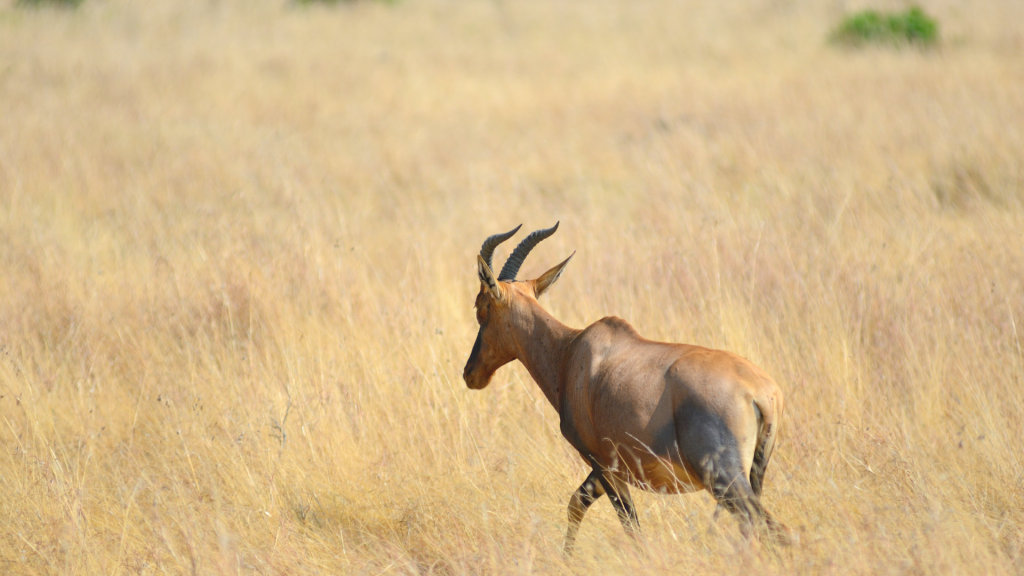Ecosystems are vastly complex and interconnected. The ability to completely monitor and visualise this complexity is far beyond human capabilities; but, with next-generation technologies like edge computing, AI and blockchain, we can combine IoT and sustainability to model the world around us and create effective solutions to bring us back from the brink of climate disaster.
This brink, or ‘brinks’ to be more precise, was conceptualised by Johan Rockström, scientist and joint director of the Potsdam Institute for Climate Impact Research (PIK). He published his model of planetary boundaries in 2009, which is a framework that tracks nine measures of human impact on the planet. These include global warming, ocean acidification, and aerosols in the atmosphere, among others. If each of these nine factors goes above a certain limit, they will cause irreversible and disastrous damage to our planet.
Of these nine factors, none is more perilous than our impact on biodiversity. One million of the world’s 8.7 million plant and animal species are on the brink of extinction. This could signal the sixth major extinction event in the history of the Earth. Preventing this isn’t only a moral imperative; it’s also a matter of survival for the human race. Biodiversity plays a crucial role in the functioning of our ecosystems that allow us to grow crops, drink fresh water, and breathe clean air.
This is why managing delicate biospheres like the African savannah is of vital importance. Protecting wildlife, preventing poaching, and conserving plant species is essential to preserving and regenerating these ecosystems. However, traditional methods are simply not working. As with any other aspect of sustainability, we need innovation, and here, I’ll explain how Zambezi Partners is deploying the Fifth Industrial Revolution (5IR) to combat the sixth extinction.
Table of Contents
Scalable solutions for sustainability
The reality is that “business as usual” isn’t going to help us move away from the thresholds described by Rockström. To halt or reverse climate change we need to make dramatic cuts in carbon emissions, roughly halving our output every decade. The same principle goes for rescuing biodiversity; we need to dramatically revise our strategy and take decisive action.
The pervasive mindset is that non-governmental organisations (NGOs) can do all the heavy lifting when it comes to conservation. However, decades of slow progress are proving that this is a fallacy. Ultimately, their business model isn’t scalable enough to make the impact we urgently need. They receive micro-donations from millions of people, which primarily go to the funding of the organisation itself. After, precious little goes to just a handful of projects.
Considering that there are over 7,700 protected biodiversity sites in Africa alone, for sustainability at scale, we need a scalable, sustainable solution for conservation. At Zambezi Partners, we believe the only way we can make progress is through technology. This technology has to be deployed in a way that supports prosperity for entire ecosystems, including humans so that we can achieve a symbiosis between people and our planet.
How can IoT help the environment?
African wildlife conservation is a great use case for this ambition. Now, entire species, endemic to Sub-Saharan Africa, are on track to be extinct in the next ten to 30 years. Recognising that we are the last generation that can reverse this fate is critical. This is why Zambezi was founded to eradicate poaching in our lifetime, and now, combines IoT and sustainability for other important use cases.
Vast areas in the African savannah harbour some of the planet’s most valuable biodiversity. Maintaining and expanding these areas’ flora and fauna is critical for the long-term viability of ecosystems, including the prosperity of humans related to these regions. Managing these protected areas by human power alone has proven to be impossible and fraught with unsolved issues over the past 100 years.

But now, we can know exactly what is going on within these complex ecosystems by deploying IoT environmental sensors, connected through mobile and LoRaWAN networks. We worked with Microsoft’s Project 15 to make these IoT monitoring systems more sophisticated than ever. Platform ZERO™, developed by Zambezi, uses a revolutionary relationship-first graph-based system based on Azure Digital Twins.
For example, in the poaching use case, Platform ZERO™ facilitates a far more detailed monitoring system than just alerts, such as when IoT sensors like a GPS collar, camera trap or drone monitor the wellbeing of an animal. Instead, a holistic graph approach, the cloud, and edge computing to enable IoT, AI, digital twins, and blockchain can also model the animal itself. Our graph-based approach allows Platform ZERO™ to model a more complex interpretation of poaching events and data and enables integration points to anti-trafficking solutions, among other applications.
Greater visibility over massive complexity
Since then, Zambezi has deployed this technology to partners with common goals. Kraus Hamdani Aerospace, for instance, are integrating their long-endurance Unmanned Aerial Systems (UAS) and the next-generation Pseudo Satellite with Platform ZERO™ to create wide-area sustainability solutions. Inspired by the anti-poaching use case, they use the digital twins to support the broader inspection, surveillance and environmental monitoring.
The system’s ability to manage complexity is absolutely central. Ecosystems are complex and deeply interconnected, with small, synergistic changes making huge impacts. The graph-based architecture manages this complexity better than traditional IoT and sustainability solutions by overhauling the standard ‘one-to-many’ data relationships. This facilitates the complex analysis required to deal with a diverse data landscape from many device types.
With this data, we can see patterns evolving and predict future scenarios. These insights help conservationists foresee calamities and make smarter decisions going forward, all from data gathered in real-time. This could help with everything from bush fire control to monitoring water pollution, cutting carbon emissions, fighting illegal deforestation, and many more applications, all while gaining insights into how they relate and connect.
Combining IoT and sustainability for new funding models
Zambezi Partners is also committed to revolutionising how we fund sustainability projects. The technologies we use should benefit the biosphere in its totality, that is, the humans that live there too. Conservation, for example, has an important link to tourism. Tourism derives its value from the existence of biodiversity, and as such, the two should have a symbiotic relationship. Communities and businesses alike should invest in this concept and work together to support conservation projects.
Equally, these new technologies give us opportunities to extract the intrinsic economic value of biodiversity. Carbon credits, for example, are valuable assets for governments and industries. Conceived as a tool to help us work towards a net-zero economy, these certificates or permits allow entities to emit a certain amount of greenhouse gas in exchange for conservation elsewhere. According to the IMF, the carbon credit value of a single elephant is $1.75 million per year.
This represents enormous carbon sequestration value to economies in central Africa, which could be captured at scale to ensure the well-being of animals, people, and their environment. There are innovative ways in which this value could be leveraged more still; for example, the tokenization of these carbon credits and linking them to NFTs could engage consumer markets in novel ways.
It’s ideas like these that can combine IoT and sustainability to provide secondary sources of incremental funding and supersede the dated NGO model. It’ll be ideas that will be key – and with talented minds and the right technology, we can rescue biodiversity and bring these invaluable ecosystems back from the brink.
Together we can make a difference
There’s not one single solution that can solve these complex challenges. Device manufacturers, software solutions, platform providers (like Zambezi’s Platform ZERO™), and networks including academic institutions, researchers, and developers working together is how scaleable impact is co-created.
Together, we can work towards making a difference. It will be innovation that drives sustainability issues like these forward, and that’s why it will be having the best minds on your team that will drive sustainable solutions forward. Platform ZERO™ was developed with a diverse and talented team of experts, but to pull a team like this together, you need help.
Outvise plays host to some of the most talented minds in machine learning, AI, blockchain, and IoT technologies. These experts are available all over the world, remotely and on-site, to help develop projects that use 5IR technologies to make our societies more efficient, productive and sustainable.
Together we can make a difference. With tech, talent, and an innovative mindset, we can protect people and the planet. It’s an honour to be amongst the professionals in this portfolio – to find out more, click here to explore the platform.
Former consultant, turned tech entrepreneur, and advisor to start-ups, scale-ups and venture capital firms. On a mission to eradicate African wildlife poaching through technology, entrepreneurship, and investment.



![[Updated] How to level up telecom sustainability](https://blog.outvise.com/wp-content/uploads/2024/01/telecom-sustainability-1-300x300.png)
No comments yet
There are no comments on this post yet.